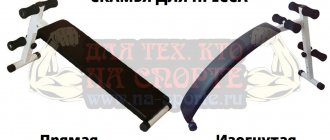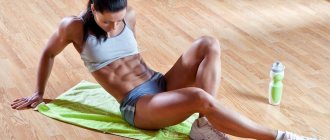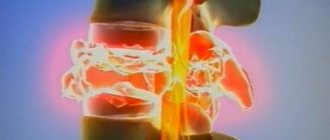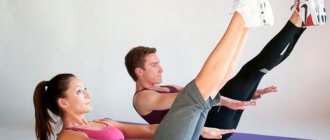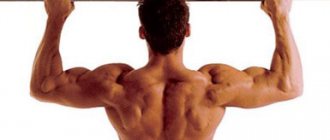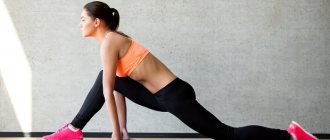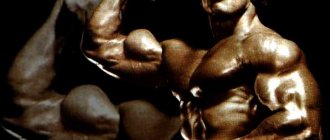What exercises with additional weights on the abs exist? Why should they be done with caution? The fitness trainer answers.
If simple crunches no longer cause the former burning sensation in the abdominal area and the treasured six-pack still doesn’t appear, don’t worry. You can continue training with weights. You can choose equipment with a weight that is comfortable for you: dumbbells, weights, weights, and even water bottles. We’ll tell you now what exercises you can do to pump up your abs with additional weight.
Elena Starostina
fitness trainer, nutritionist, body fitness athlete
It is important not to overdo it with weights. It is worth noting that with hypertrophy of the oblique abdominal muscles, which are also involved in the exercises, the waist will not narrow. It will increase in volume. And although this growth is precisely due to muscle mass, if your plan was to model a silhouette with a narrow waist, you should be careful about abdominal exercises.
An exercise that will help pump up your abs and improve your posture. How to make a "bicycle"
How to achieve perfect abs and a thin waist? 13 exercises for your dream figure
What is a press?
There is no such thing as “abs” in anatomy. This is the conventional name for the abdominal muscles. There are four of them: straight, internal oblique, external oblique and transverse.
The rectus abdominis muscle is the largest in area, it is paired and consists of vertical longitudinal muscle bundles. Contrary to the misconception that there are “lower” and “upper” abs, the rectus muscle does not have such a division. The notorious “cubes” stand out due to the tendon jumpers on the rectus abdominis muscle.
The muscle bundles of the external abdominal muscle start from the lower eight ribs and go down radially, the internal oblique muscles are located respectively inside of the external ones. The transverse muscle is located deeper than the other abdominal muscles. In this case, its tendon stretch in the upper two thirds passes behind the rectus muscle, and in the lower third - in front. Partly because of this, the lower “cubes” of the press are less amenable to training than the upper ones.
Truths and myths about building abdominal muscles
In the field of bodybuilding, there are many myths and incorrect ideas about the formation of sculpted, pumped up abs. In this article we will try to figure out which aspects of abdominal training really work, and which are nothing more than a popular misconception.
We are all familiar with the most popular pictures for the search “bodybuilding”, which depict a slender, attractive body with strong, expressive abs. But do you know how to properly pump up your abs to achieve such spectacular sculpted abs? Maybe it's all about the right diet? Or is the secret hidden in a specific training program? Or is there a perfect combination of nutrition plan and training that will help you build this impressive muscle group quickly and effectively?
There are many myths and misconceptions among athletes about developing ideal abs. Below we'll look at the 6 most common tips for pumping up your abs and find out which ones actually work and which ones don't.
1. To strengthen your abs, you need to work them out every day or at least every other day.
Not true:
Many exercises for other muscle groups indirectly affect the abdominals, so you don't need to pump them as often. In exercises like barbell squats, deadlifts, and seated military presses, the core is stabilized primarily by the abdominal muscles, meaning you'll get more sculpted abs with each rep.
Additionally, like any other muscle group, the abdominals need some time to recover after a workout. With daily intense exercise, the abs simply will not have time to recover, and you, naturally, will not achieve the desired growth. Of course, you need to train your abs on their own – ideally, do exercises for the internal and external oblique abdominal muscles (lateral abdominal muscles), as well as the rectus abdominis muscle, twice a week. And in no case do not forget about exercises for the spinal muscles and serratus muscles, because the lower back is also part of your torso.
Ab workouts help burn fat, especially around the waist
Not true:
Every day, millions of people around the world work out their abs to the point of exhaustion, under the false assumption that it will help remove excess fat from their sides and waist. No matter what part of the body you're trying to get leaner, local fat loss is nothing more than a common myth. If your waistline becomes slimmer, it means that fat stores are being reduced throughout the body, rather than in one specific part of the body. Abdominal strengthening exercises are essential for overall functional strength, and lack of exercise can cause postural problems. Just don’t be mistaken that they help get rid of waist fat.
3. For a ripped six-pack to appear, the percentage of body fat must be at 10%
Is it true:
No matter how much exercise you do, you'll never see the results of your hard work if your abs are hidden under a layer of visceral fat—the gel-like internal fat that accumulates and is stored in the abdominal cavity. How lean you have to get to finally achieve defined abs depends to some extent on both physiological and individual genetic factors. Simply put, fat is distributed differently in everyone's body. That’s why even if you and your friends or relatives have the same percentage of body fat, this does not mean that with equal indicators your abs will look as flabby or sculpted. However, nutritional scientists have found that in general, for the abs to show up in all their glory, the percentage of body fat really needs to be about 10%.
4. Strong abs are an indicator of good health.
Both truth and myth:
on the one hand, a slender, pumped torso really indicates a commitment to a healthy lifestyle, training and proper diet. On the other hand, many people achieve their six-pack by exhausting themselves, not consuming enough calories, and doing too much cardio too often and too intensely.
Definitive abs indicate a combination of two factors: strong abdominal muscles and a low percentage of body fat. The main challenge is to find a healthy balance between them. Remember that to improve your health, your main goal should remain improving functional strength, not developing chiseled abs. If you achieve the first goal, you will be able to achieve the second, but the reverse order does not always have a positive effect on your health.
5. Anyone can get ripped abs
Is it true:
You've probably heard more than once how they say about some guys in the gym that they were literally “born” with abs of steel? In reality, most athletes simply don't have the dedication to get those perfect, chiseled abs, but that doesn't mean they can't do it. Anyone who exercises regularly and eats a healthy diet can build strong abs. It’s just that, depending on the genetic characteristics of different people, it will look sculpted to varying degrees.
6. Abdominal training makes your waist look slimmer.
Both truth and myth:
With the right diet, you can definitely achieve a reduction in abdominal and visceral fat, resulting in a truly slimmer waistline. But if you already have a small percentage of body fat, know that strength training your abdominal muscles will definitely not reduce your waist size. In fact, it may even increase.
The abdominal muscles develop similarly to any other muscle group in your body. Weightlifting, powerlifting and, in principle, any strength exercise are designed to train muscles to increase their strength and size, which, of course, at some point leads to an increase in their volume. As for the waist, the growth of its volume is most stimulated by exercises for the development of the lateral press.
Why do we need abs?
The abdominal muscles belong to the so-called core muscles, a complex of muscles responsible for stabilizing the spine, pelvis and hips. Each of the abdominal muscles is responsible for its own functions. The rectus muscle is for twisting the body in the lumbar region, the external oblique muscle is for rotating the body in the opposite direction, flexing the spinal column, and is involved in the contraction and expansion of the chest. The internal oblique muscle is responsible for the same functions as the external oblique, but is responsible for rotating the body in the other direction. The abdominal muscles, together with the muscles of the lumbar back, allow you to maintain posture, participate in the respiratory process, and in women they play an important role during childbirth.
Effective loads
There are time-tested exercises for training the abs. Both statistical and dynamic options bring maximum effect. It is mandatory to warm up before training and stretch after it is completed.
Leg Raising
The rectus abdominis muscle is involved in the work. Beginners are recommended to do the exercise on the floor, and professionals on the horizontal bar. Step by step execution:
- Lie on your back, press your lower back and lower limbs to the floor, stretch your arms along your body.
- slowly raise one or both legs straight at an angle of 45-600. Hold at the highest point for 2 seconds, while keeping your abdominal muscles tense.
- Lower your lower limbs to the starting position with your heels without touching the surface.
- Do repetitions.
Plank
This universal exercise works the abdominal area, the muscles of the buttocks and the shoulder segment. Abdominal and arm training occurs simultaneously. Classic way:
1. Make an emphasis while lying down, resting on your palms and toes. Straighten your back, spread your feet shoulder-width apart or place them together.
2. Tighten your abdominal muscles.
3. Stay in this state for as long as possible. For beginners, it is better to start with 20 seconds and gradually add time.
Crunches
The best ab workout involves working the rectus abdominis muscle. The effect will be greater if you do the task with weights. Execution scheme:
1. Lie on your back, press your lower back to the mat, bend your legs, put your hands behind your head, and press your chin to your chest.
2. Smoothly and slowly lift the shoulders off the mat using the abdominal muscles up a few cm. Keep the amplitude to a minimum. Stay in the top position for 1-2 seconds.
3. Slowly lower your upper back.
4. Do repetitions according to the scheme.
Bike
A good option for pumping up oblique muscles. It is done like this:
- Lie on your spine, press your lumbar region to the floor, your upper limbs are extended along the body, and your lower limbs are bent at the knee joints.
- Make movements reminiscent of a bicycle. Raise your legs and shoulders up and stretch your elbow to the opposite knee.
- Repeat on the other side.
- Constantly alternate twists.
Scissors
An hour-long ab workout should include scissors. This is one of the best exercises for pumping up your lower abs. Technique:
- Spread the mat and lie down on it. Press the lumbar region to the floor, stretch your arms along the body.
- Raise your straight legs 10-20 cm up.
- Make swings with your lower limbs like scissors. Straighten your knees, point out your toes.
- Take the starting position and repeat again.
The bigger, the better?
One of the most common misconceptions about abdominal training is that the more reps we do in a set, the stronger and more voluminous our abs will be. In fact, the abdominal muscles are no different in terms of training, for example, from the biceps. To increase your biceps, you will begin to do one hundred repetitions per approach; on the contrary, you will reduce the number of sets and repetitions, but increase the load. By increasing the number of repetitions per set, you will develop strength endurance, but this will not make the muscle thicker. It is much more effective to increase the load, do sets with weights and reduce the number of repetitions per set from 8 to 20.
Rules for creating a training
Abdominal training is based on the following principles:
- combining exercises with your own body and weights;
- you need to train constantly. After intense exercise, it will take longer to recover. The maximum effect will be brought by 2-3 training sessions per week with a combination of general strength loads;
- monitor whether progress is moving forward. You need to gradually increase the working weight.
An approximate cycle program is built according to the following scheme:
1. The first set consists of a strength exercise (hanging leg raises, upper crunches) of 10-15 repetitions. If it is difficult to do such a number of repetitions, then you need to reduce the weight.
2. Transition to exercises with your own body. Perform as many times as possible.
3. The third set includes exercises without weight and also do it to the maximum.
4. Rest for 2-3 minutes. before starting a new cycle.
The more often the better?
Recovery is no less important part of the training process than the loading phase. After training, muscles go through three stages: recovery, supercompensation and return to performance. In order for muscles to grow, you need to draw up a training plan in such a way that the next workout falls on the supercompensation stage, but in no case during the recovery period. These processes were described back in 1953 by B.S. Gipenreiter in the book “Recovery processes during sports activity.” The abdominal muscles, like any other muscles, need time to recover. Otherwise, not only can training be wasted, but the risk of injury will also increase. Do you need it?
From 40 to 50: fighting hidden fat
For what . On average, after 40, a woman gains about half a kilogram of weight over the course of a year, and, due to the approach of menopause and hormonal changes, fat “moves” from the hips to the stomach. However, this is only the tip of the iceberg: the fatty tissues that surround our internal organs and are normally designed to protect them also grow and gradually turn into a serious threat. Doctors associate high levels of this “internal” fat with the risk of cardiovascular disease, diabetes and even cancer.
How . Unfortunately, there are no magic recipes: you just need to eat right and exercise more. With the onset of the 5th decade, the daily calorie intake again drops by about a hundred, but scientists insist that diet restriction alone is not enough. To overcome dangerous hidden fats, you will have to exercise for an hour a day, without interruption.
For what . Have you ever heard of urinary incontinence? And you probably think that this is a purely children's problem. Not at all: adults just don’t tell anyone about it. Meanwhile, this problem befalls many women after 50 and is associated with weakening of the pelvic muscles.
How . Fortunately, this muscle can also be pumped up. Tighten and relax your muscles as if you want to hold back urination; These simple and unnoticeable exercises should be done 3 times a day, 10 times per approach.
Technology first
The abdominal muscles work in tandem with the hip flexors. In addition, the muscles of the lumbar back are involved in body lifts, the so-called crunches. Under no circumstances should you make sudden movements when performing crunches, as this can lead to injury. The optimal exercise for the rectus abdominis muscle is crunches on the so-called abdominal bench: this machine allows you to stretch the muscle, which makes the workout more effective, as the range of motion increases.
After 50: no hernias and strokes!
For what . If you haven't already experienced the consequences of a sedentary lifestyle, prepare for them to hit you at 50. Our bone density and muscle strength begin to decline naturally at this age, so they need additional support. Otherwise - pinching, hernias, wild pain. And an extremely ugly stoop and even a hump.
How . Go back to the good old bike and scissors, but do the exercises slowly while lying on a very soft surface (like a bed). In the morning, do 20 slow forward bends and several stretching exercises (for example, put your feet shoulder-width apart, raise your arms to your chest, elbows apart, and slowly turn your body left and right). And while sitting in your favorite chair and solving a crossword puzzle, alternately slowly raise your left and right legs - this will strengthen both your back and abdominal muscles.
By the way, according to the recommendations of American cardiologists, light physical activity is an excellent prevention of heart attacks and strokes and can improve the quality of life of pensioners. It helps saturate the blood with oxygen, prevents blood clots and works as a natural antidepressant.
Combine exercises
It is unlikely that you will be able to pump up a beautiful abs with the help of just bending the body on the floor or on an abdominal bench. Experts advise combining exercises. The optimal workout for getting a six-pack may include, for example, low-range isolated crunches, abdominal crunches, or hanging or incline leg or knee raises. To train the oblique abdominal muscles, crunches from a lying position, which can be done with weights, will also be effective.
Effective Core Stabilization Exercises
Pro in plank
A multifunctional exercise that allows you to pump several muscle groups at once, including the abs, hips, latissimus dorsi, deltoid and pectoral muscles. You can start with a static plank without moving up. It is done on straight arms or on the elbows if you have contraindications for stress on your wrists.
Execution technique
From a standing position, lower yourself forward, touching your hands to the floor. Stretch them so that at the lowest point you reach the classic static plank: the body is tense, the abs are tightened, the back is straight, strong arms and legs. Stay in this position for a few seconds and gradually move your hands in the opposite direction. Perform the complex smoothly, without jerking. Returning to a standing position, repeat the exercise several more times.
Transition to plank
Muscle failure
There is no need to work your abs to muscle failure, especially for daily training.
- Firstly, this is a large load on the body, which means its recovery will take much longer. Also, this is stress, which can not only ruin the result of the workout, but also complicate the recovery process.
- Secondly, the desired effect can be achieved without killing yourself with a heavy load. It's all about the correct sets, approaches, repetitions, and rest time.
Take, for example, 6-7 exercises for different parts of the body. The number of repetitions is from 12 to 26. Of course, to each his own, but don’t be surprised by the small numbers. Even with an already normal base, you can achieve good results if you do everything regularly and correctly. Perform 2 circles with a rest of 30 seconds, every day you need to do a plank.
Don't ab workouts burn fat?
Actually no - abdominal exercises have nothing to do with fat burning. The rule here is this: if you want to lose weight, pumping up your abs will not help, but if you want to pump up your abs, you need to lose weight. And nothing else.
Most abdominal exercises are not too energy intensive, which means you will lose few calories. Diet, regular strength training and cardio training will help you lose weight. There are no special programs for weight loss: any complex strength training is essentially fat burning.
The main thing is not to gain extra calories from food.
